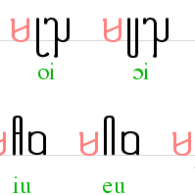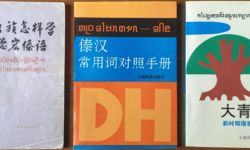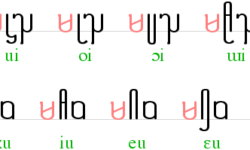Profile
The Tai people are an ethnic minority scattered across a large area that includes parts of China, Myanmar, Vietnam, Thailand, northeast India, northern Malaysia, and Laos. Not surprisingly, this spread has led to wide variations in dress, cultural traditions, and language.This also explains why there are not only many different Tai scripts, but each Tai script has several names.
The Tai who live in the northwestern part of Yunnan province in China are no exception. The Chinese refer to them as Dehong Dai. (Confusingly, “Tai” is often written as “Dai.”) To the south and west of the prefecture lies Myanmar, where the Tai population are known as Shan. Hence, the Dehong are often referred to as “Chinese Shan,” i.e., Shan living in China. In Thailand they are called Tai Neua. “Tai Mau” and “Tai Kong” are also used. However, the Yunnan Tai refer to themselves as Tai Le, which literally means “upper or northern Tai.”
The Tai languages are ancient and the Tai Le script itself has been through many variations. The Chinese have a history of official involvement in the development and revision of writing systems, and Tai Le was no exception, being revised in 1954 and again in 1988. None of this changed the fact, though, that the Tai Le are a minority culture at the mercy of a much larger and more powerful one–the usual conditions for the endangerment of an alphabet.
“Dehong, like other Tai minority languages in China, is a dying language,” writes John Hartmann. “Traditional Dehong writing came with the spread of Buddhism and its revival depends on religious revival. The Cultural Revolution caused a cessation of the practice of Buddhism in China. Buddhism can now be practiced again in China, but many traditions have been lost, including the transmission of literacy in Dehong.”
The script is still used to a small extent for signage, several Tai Le fonts have been created, and in theory, as the Chinese government has given the people of the region autonomous status as the Dehong Dai-Jinpgpo Autonomous Prefecture, Tai Le culture should be protected.
In practice, it would be optimistic to see anything ahead but steady cultural erosion and loss of traditional identity.
You can help support our research, education and advocacy work. Please consider making a donation today.
Links
General Script, Language, and Culture Resources
- Omniglot
- Wikipedia
- Unicode (PDF)
- Tai Dehong General Information
- An Introductionary Lesson to Dehong Dai
- Dehong Dai Skyknowledge
- Scriptsource
- Learning Dehong Dai Video
- Introduction to the Tai Le Script Unicode
- Dehong Dai Homonym Book (Chinese Edition)
- Dehong Dai WordPress Article
- Dehong Dai – life rituals note read word translation(Chinese Edition)
- Background on language and culture














